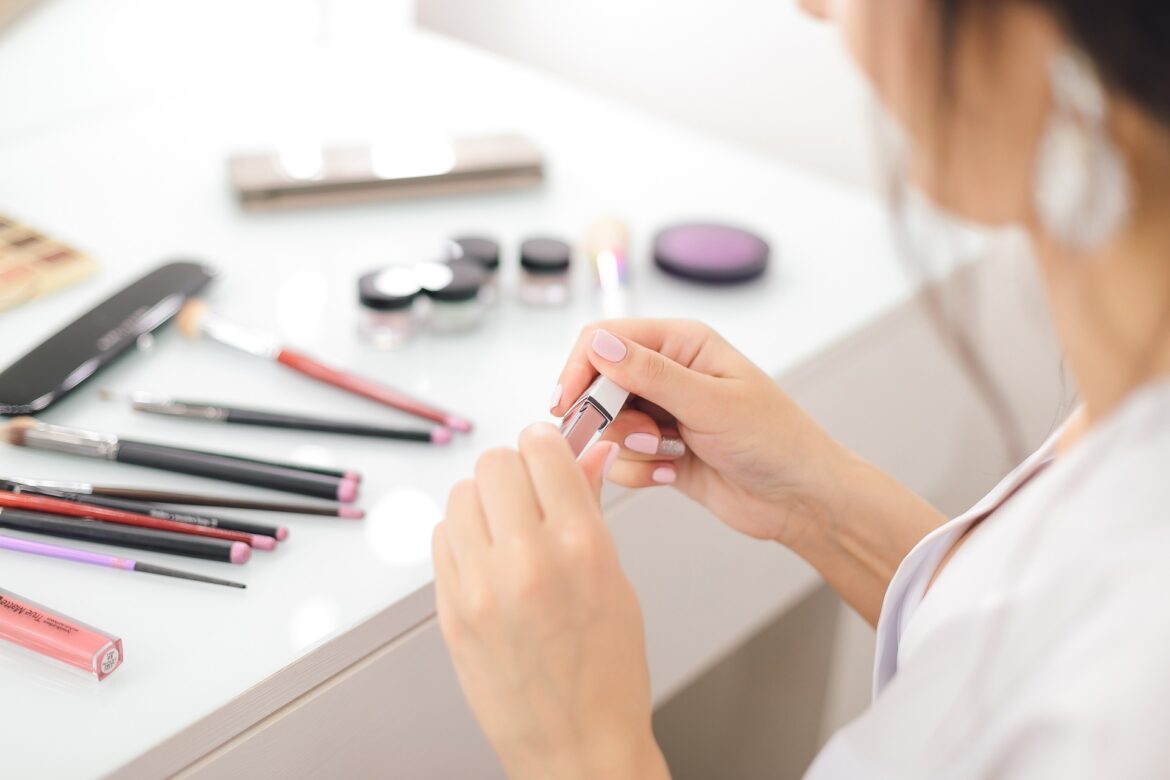The Most Common Makeup Ingredients
Makeup can be an enjoyable creative outlet, yet some cosmetics contain harmful ingredients which could irritate and harm skin.
There are various chemicals added to makeup and cosmetics products to extend shelf life, some of which have been linked to health concerns like endocrine disruption and cancer.
Water
Water is one of the key ingredients found in cosmetic products and often appears at the top of ingredient lists. Water serves as the main solvent and aids in dissolving other components like shampoo, cleansers and lip balm. Furthermore, it’s widely used for haircare, eye makeup application and soap production.
Water is essential, yet in combination with too many ingredients it can clog pores and cause dehydrated skin. Therefore, many natural beauty brands opt for products without water-based formulas when formulating their products.
Water-based products require preservatives in order to avoid microorganism growth and contamination, thus giving many powder forms longer shelf lives than their liquid equivalents.
Cosmetic products aim to alter our natural coloring in some way. A wide array of substances such as mica flakes, iron oxide and titanium dioxide come together to form the colors seen on makeup stands today – these could include pigments found naturally like beet powder or coal tar or even animal sources like carmine from cochineal insects.
Minerals can add color, while also acting as moisturizers that won’t dry and tighten skin. Talc is one such mineral, adding texture while soaking up excess oil without leaving behind residue – it is frequently found in blushes and foundations to ensure they blend into skin smoothly for a seamless appearance.
Other common minerals include mica, which adds shimmer and shine to products by reflecting light in an array of reflections that creates a radiant look. Mica also provides soft silky skin feel and can make products more opaque; additionally it acts as an effective skin exfoliating agent helping remove dead cells from its surface.
Minerals may provide an effective alternative to ingredients that could irritate the delicate eye area, including synthetic fragrances, dyes and formaldehyde-releasing preservatives such as bronopol, DMDM hydantoin, imidazolidinyl urea and quaternium-15 which slowly release formaldehyde over time – these preservatives can often be found in nail polish, hair straightening products and eyelash glue.
Pigments
Makeup and skin care are often seen as two distinct product categories that have no relation with each other; however, they’re actually deeply interlinked. Healthy skin is essential to having flawless makeup application, which requires just as much care in your skincare regimen as in cosmetics application. Being aware of what’s in your products will help avoid unnecessary side effects like blemishes, redness or discoloration from occurring.
Pigments are an integral component of any makeup product, lending color and shine to lipstick or eyeshadow alike. Pigs used in beauty products come from either natural or synthetic sources and can be divided into two groups according to how they’re manufactured: organic pigments are carbon-based and typically found in minerals or plants while inorganic ones may include metal oxides like iron oxide or titanium dioxide.
Pigments can be used both alone and in combination with other chemicals to create desired effects in certain products. Mica flakes are popular cosmetic ingredients as they naturally reflect light; when coated with substances like talc or bismuth oxychloride they produce various colors through iridescence.
Preservatives are another key element found in makeup products, added to prevent microorganisms like bacteria or fungi from spoiling and potentially harming products. Preservatives can either be natural or synthetic depending on their formulation; organic acids and fatty acid esters tend to work best as natural solutions while aldehydes, glycol ethers, isothiazolinones and phthalates may perform better as synthetic preservatives.
Cosmetic products utilize ingredients called emulsifiers and thickeners to stabilize their formulas, so that they do not separate during use. Emulsifiers help keep oils and water together, preventing separation that would result in a runny consistency – examples include xanthan gum, polysorbates and potassium cetyl sulfate as emulsifiers. Thickeners add texture and volume to products while making them feel luxurious on skin – examples include guanine, urea, gelatin as well as fish scales (used in mascaras and nail polishes).
Thickeners
Thickeners are used to increase the consistency and viscosity of cosmetic products. Some thickeners possess emulsifying or gelling properties and may act as stabilizers to keep ingredients from separating in a formula. Thickeners come in various forms such as guar gum, xanthan gum and gelatin; examples may include these ingredients.
Some thickeners are water soluble while others aren’t, while some can be either acidic or alkaline in composition and stable in temperature ranges across their operating spectrum. Thickeners which don’t dissolve easily must first be dissolved before use to achieve their thickening effects in food and drinks – such as egg yolks or nutmeg for thickening purposes – in order to achieve their desired texture.
Thickeners typically derive from polysaccharides (starches, vegetable gums and pectin) or proteins. Available as powder or liquid form, thickeners can be added to foods and beverages to thicken their consistency. While starch-based thickeners have long been available as powder and liquid products, newer gum-based thickeners such as cellulose and xanthan gum offer greater stability compared to their predecessors and provide additional applications – they can even withstand being heated or frozen without becoming clumpy!
Food thickeners can be broken down into two broad categories, natural and synthetic. Natural thickeners come from plants and animals and include things such as arrowroot, gelatin, chia seeds, flax seed oil or wheat flour (barley durum emmer kamut malt millet rye soy seminola wheat germ germ). Natural thickeners tend to be cheaper than their synthetic counterparts while providing more flavor – however some natural thickeners may leave a gritty finish and may clump when mixed in the finished product.
Dieters with gluten allergies may find agar or arrowroot suitable, as both ingredients are free from gluten. Egg yolks are another traditional sauce thickener but require careful temperature management in order to preserve their rich texture. Preservatives are frequently added to thickeners because of their antimicrobial properties which help prolong shelf life of products containing these thickeners; popular examples of such additives are benzyl alcohol, butylene glycol and methyl paraben.
Emulsifiers
Emulsifiers are used to mix substances that typically don’t mix, like oils and water, in a uniform way – essential to cosmetic products having a consistent consistency! They also serve to stabilize an emulsion so it doesn’t separate, keeping you looking your best!
These ingredients come from either natural or synthetic sources, with natural sources often including plants and animals; natural ingredients often chosen because of their softening, conditioning and nourishing benefits are used in natural and organic cosmetics products.
There are various types of emulsifiers, including oil-in-water (O/W), water-in-oil (W/O), silicone, anionic surfactants and non-ionic surfactants. Ionic surfactants tend to be less stable and need higher concentrations for similar results as their non-ionic and anionic counterparts.
Oil-in-water emulsifiers are among the most frequently employed emulsifiers, as they bind oil droplets together and prevent them from dissolving into the water phase. This type of emulsion is widely utilized in makeup and shampoo products because it helps create an even texture while providing more consistent appearance and feel to both products.
Water-in-oil emulsifiers work to disperse droplets of water through an oil phase. This method is highly sought-after in skincare products due to its luxurious feel and ability to mitigate irritation caused by synthetic ingredients.
Anionic emulsifiers derived from plant or animal sources tend to be gentle on skin, making them cost-effective compared to their non-ionic or cationic counterparts; however, their difficulty in reducing interfacial tension between oil and water phases can sometimes make them less suitable.
There are other types of emulsifiers, too, like solid waxes that solidify at room temperature to produce thicker textures; other liquid emulsifiers provide soft and silky textures to formulations; the ideal emulsifier will be able to meet all these different criteria and deliver exactly the results that will achieve success in your final makeup! Choosing wisely could make or break your cosmetics!




